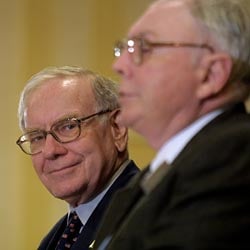During the early days of his career, Buffett invested in the same was as Graham did, focusing on a variety of "cigar butts" - businesses that were for the most part unattractive except for their price, complimented with investments in special situations. However, with influence from Philip Fisher, author of "Common Stocks & Uncommon Profits," and his partner, Charlie Munger, Buffett switched his focus to what he is now more famous for: businesses that possess competitive moats selling for reasonable prices.
Where the philosophies of Graham & Fisher merged and where Buffett first had his "eureka" moment were, in my view, during the Salad Oil Scandal of 1963. American Express fell victim to fraud and suffered substantial losses as a result. Here Buffett sensed an opportunity: was the underlying business that American Express (AXP, Financial) engaged in damaged? His "scuttlebutt research" revealed that it was not. While the scandal cost American Express greatly, the impact that it had on its name and level of prestige, along with its ability to generate future profits from that credibility, were left unharmed and intact.Graham's focus on hard assets would have steered him away from American Express.
Fisher's influence though was far greater here, as he believed the qualitative aspects of the business were far more important, and Buffett effectively integrated the two underlying views: buying a business with an endurable economic moat at a bargain price. The crux of the investment decision came down to the underlying question of whether the impact on the business was permanent. History has shown that Buffett was right on all counts.
Buffett has often remarked that the value of a business is essentially the value of all its future cash flows added up and discounted to the present, i.e. a discounted cash flow model. This means that one has to take a rough guess regarding the estimated growth rate in order to arrive at such a figure. It is essential to bear in mind that such figures are not plucked from thin air, that they are the results of a careful examination of existing financial results and a careful analysis of the business itself and any managerial decisions.Making such a projection into the future is inherently a risky bet. Many variables are at play: The entrance of future competitors and the emergence of new trends are just some of the potential problems.
For this very reason, you saw Buffett gravitating towards businesses which had an inherent "inevitability" to them, businesses akin to Coca Cola (KO), P&G (PG, Financial) and Wells Fargo (WFC, Financial), for example. Although their future is not certain, there is a higher probability that particular habits will not change that much, such as the way us humans eat and drink, in comparison to what new gadget we will own tomorrow. It is therefore easy to understand why Buffett chose not to invest in technology companies regardless of the valuations; any projection into the future will be inherently flawed from the outset and rendered meaningless.
While Buffett's approach certainly aided him well, there are pitfalls for the average investor who seeks to adopt such an approach to investing. There are shortcomings to Graham's approach of finding statistical bargains, although its attractiveness is that it requires very little judgment in predicting the future. It is very much a simplified "quant-based" strategy founded on the fundamental principles of value investing.Buffett's approach requires much greater skill. It requires much more intensive research into not only the underlying company, but its competitors, the industry and much more. All these factors are required to make a future projection of cash flow. Furthermore, it is easy to err in the process of making an estimation of future growth rates and it is hard to ascertain whether one is right in the predictions for the years ahead.
Either strategy, providing that it is applied effectively, will yield satisfactory results for investors. However, those who attempt to mimic Buffet must bear in mind the intricacies of his investment process and put in the requisite work required of such a method.
